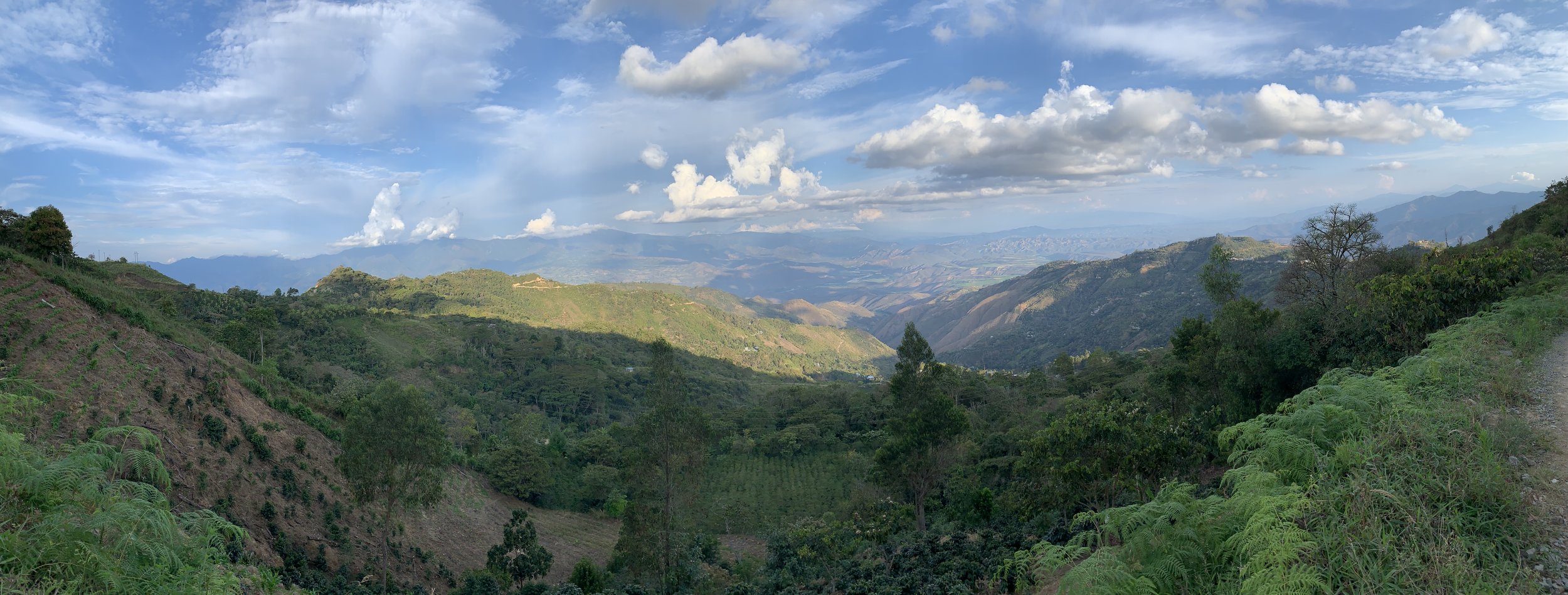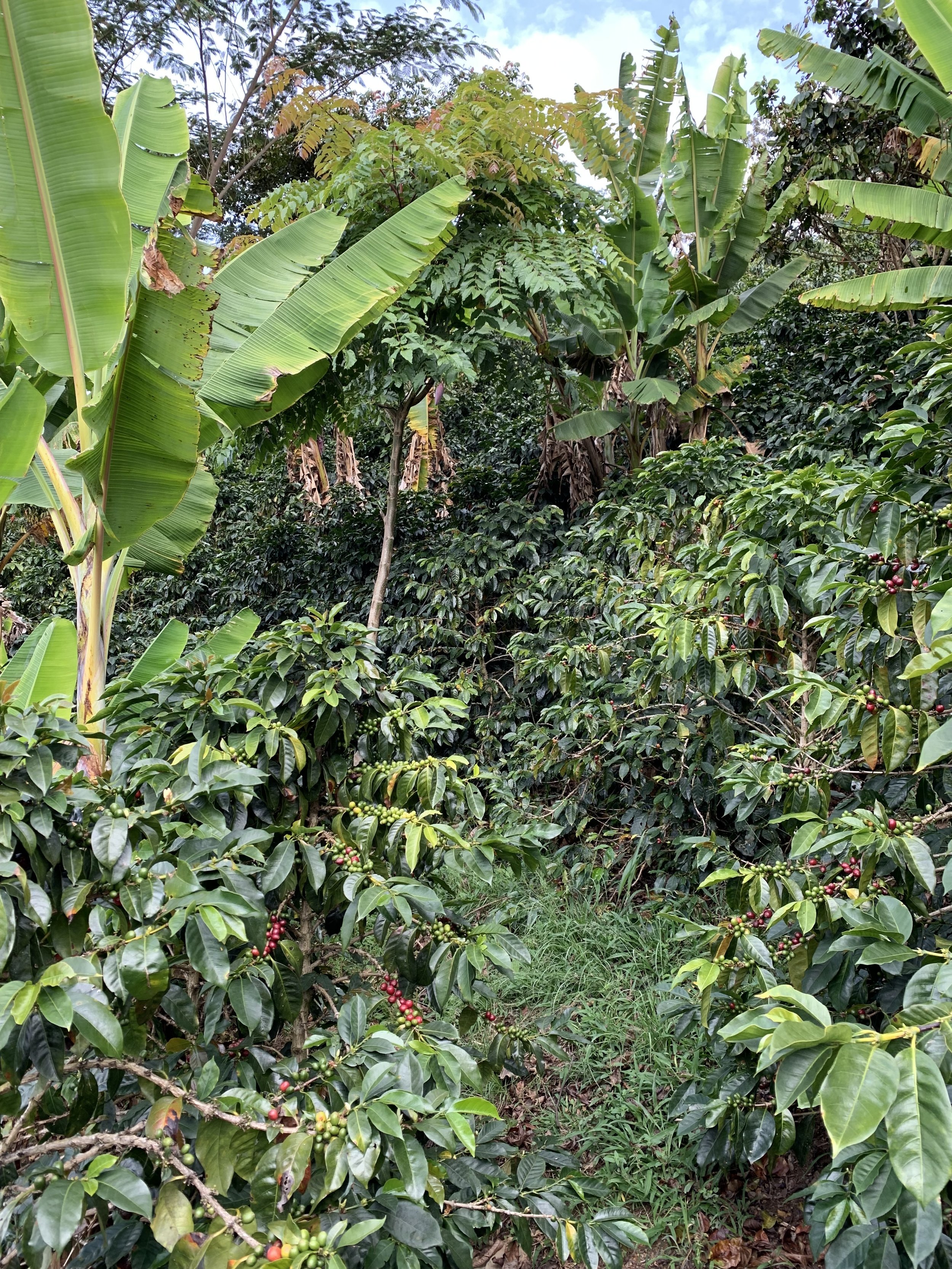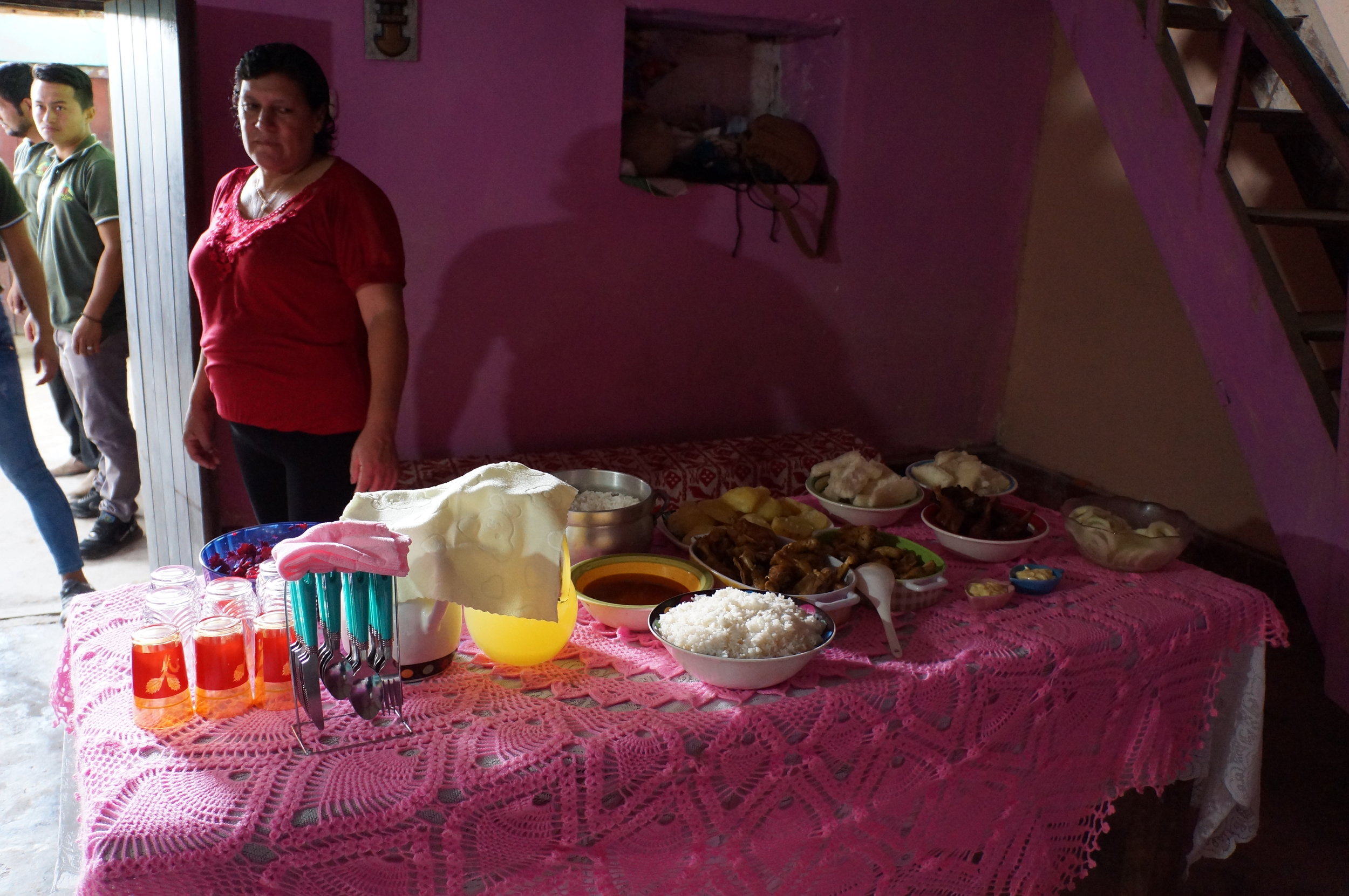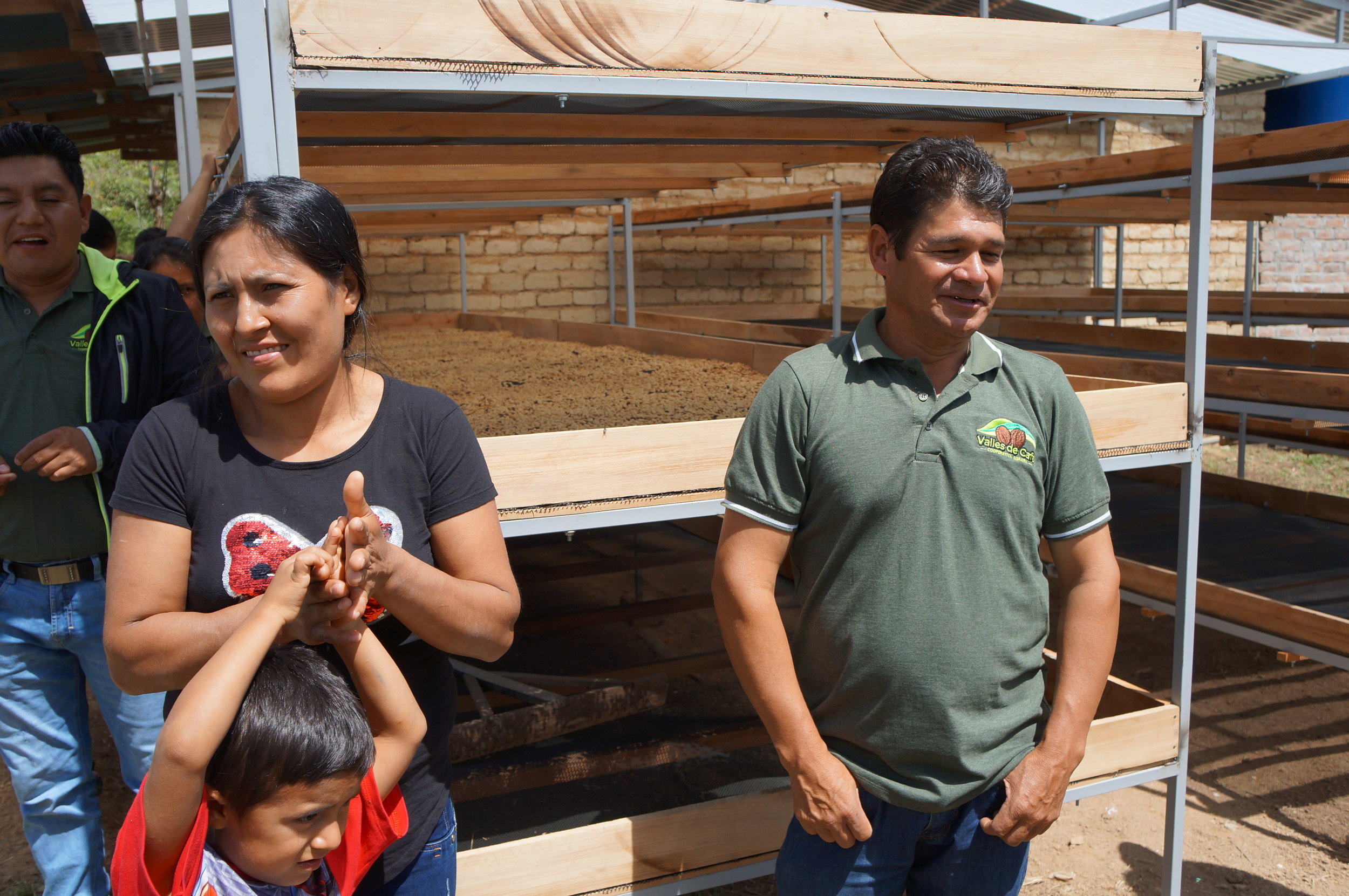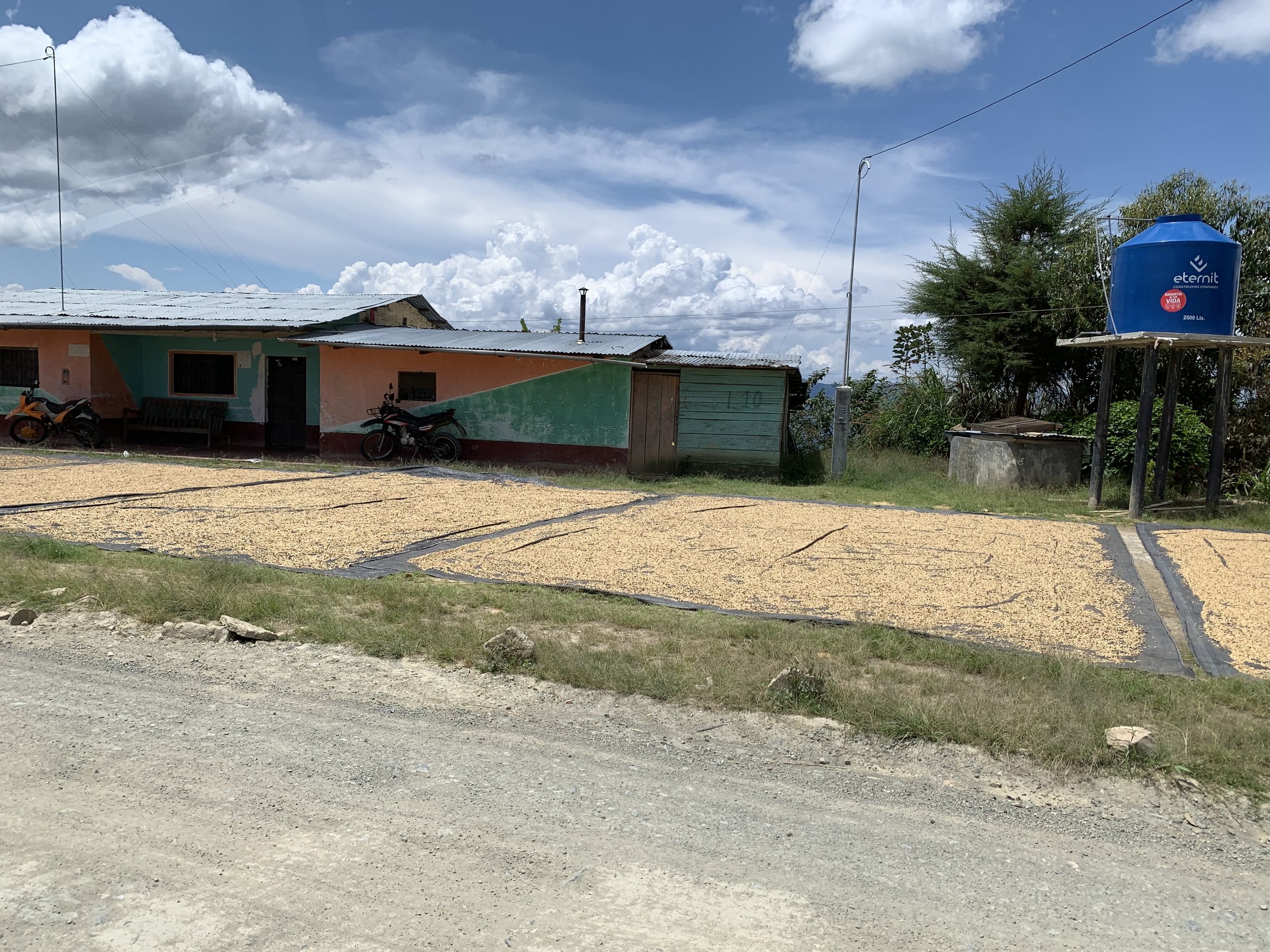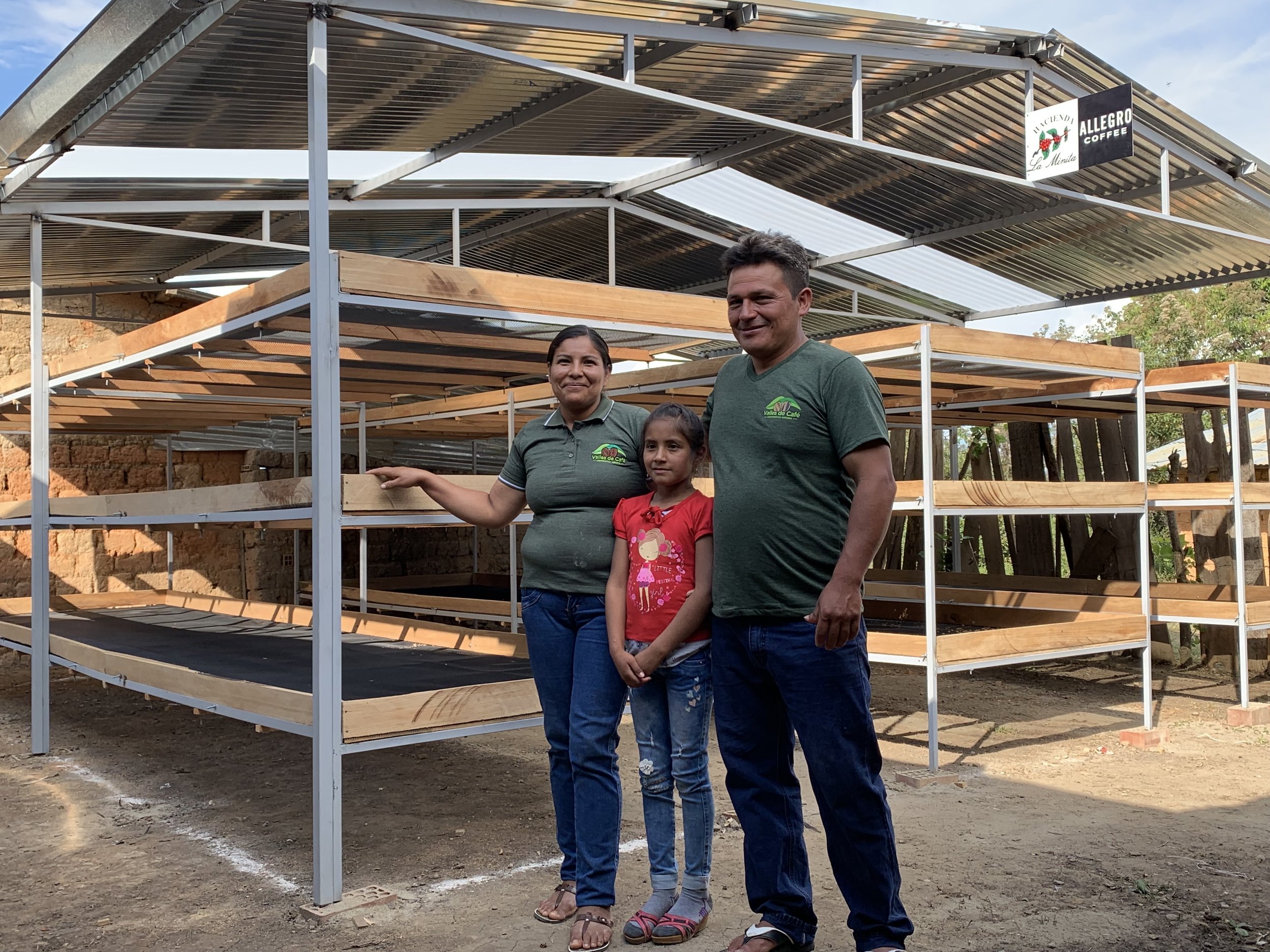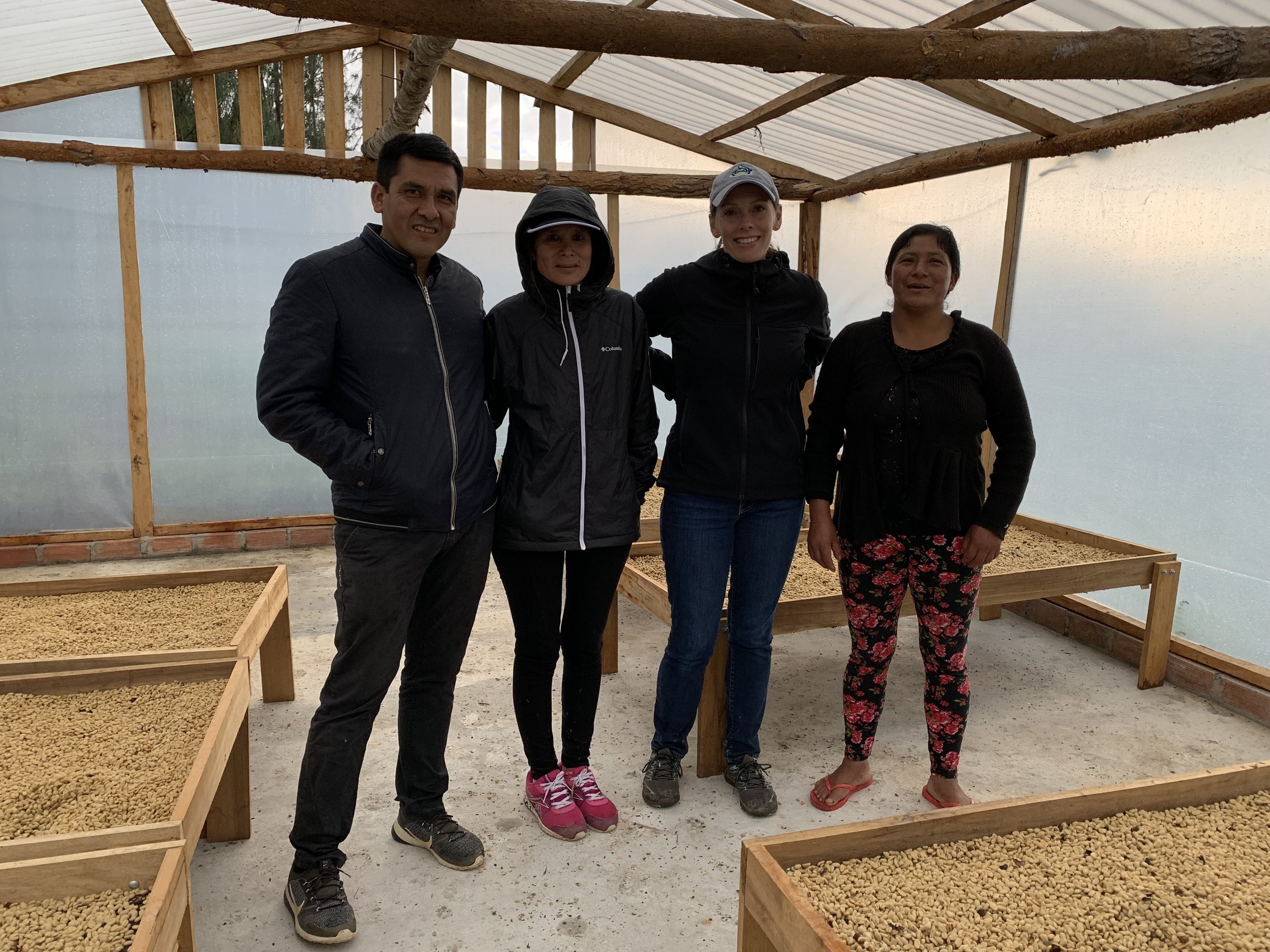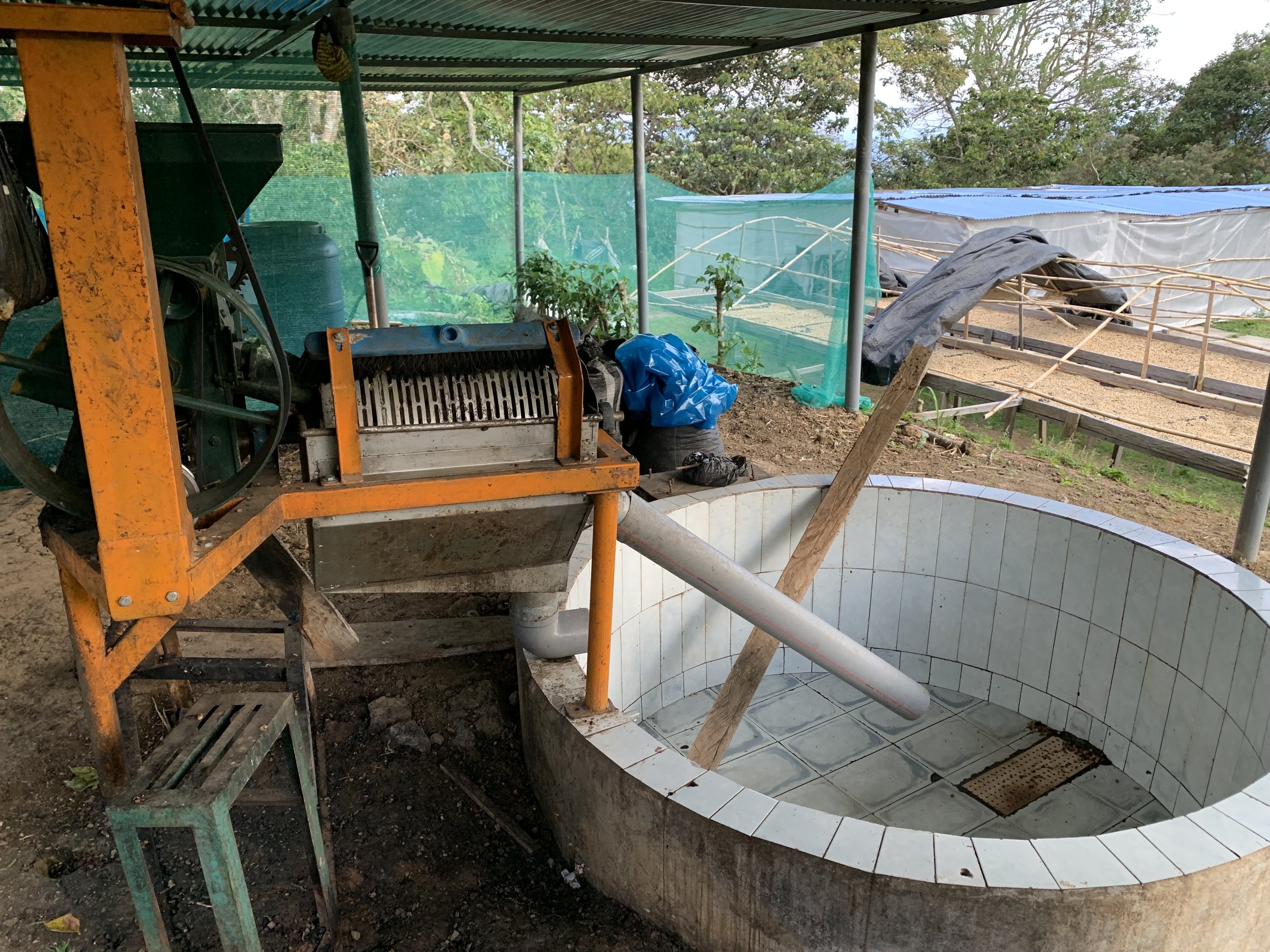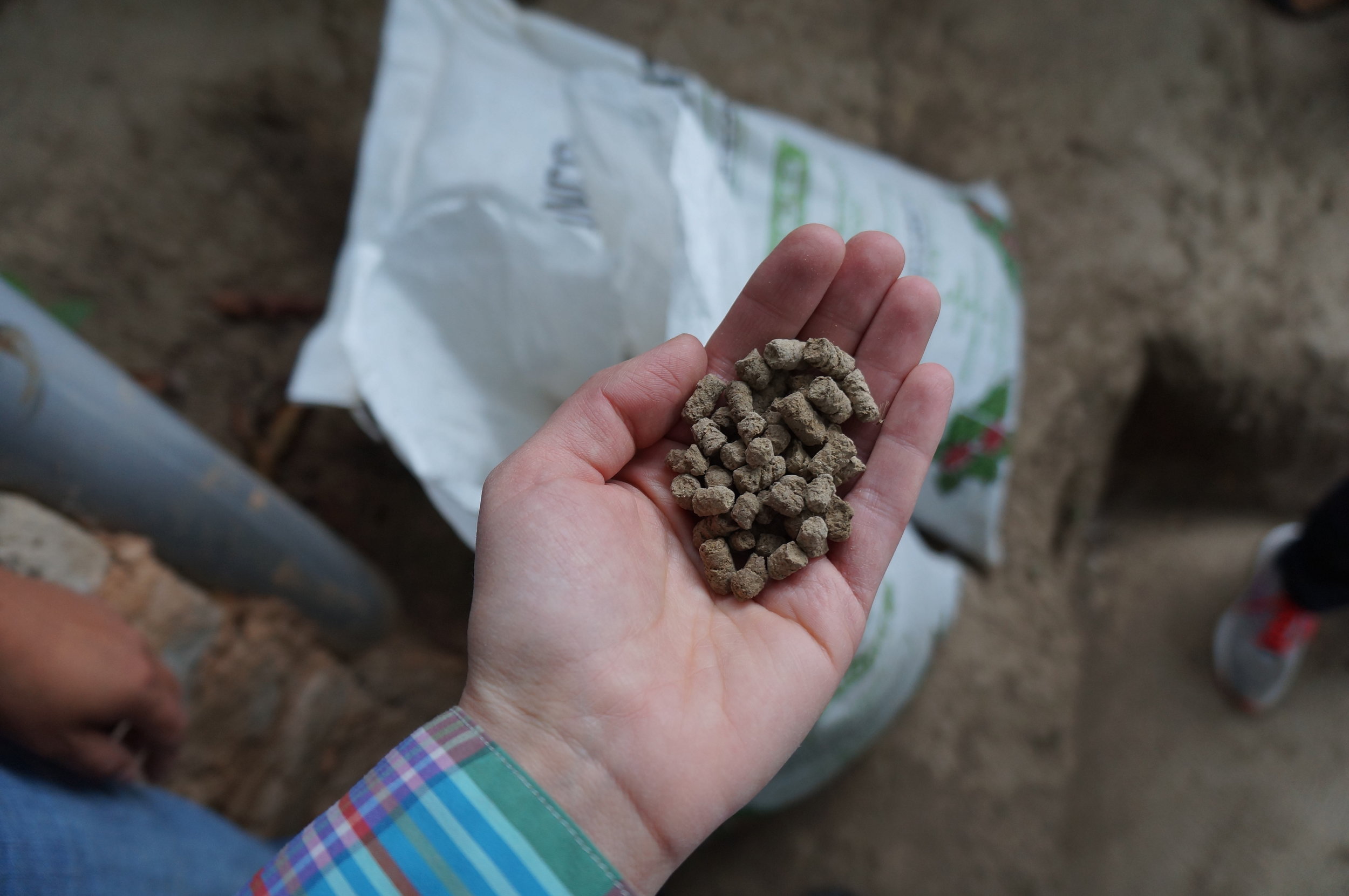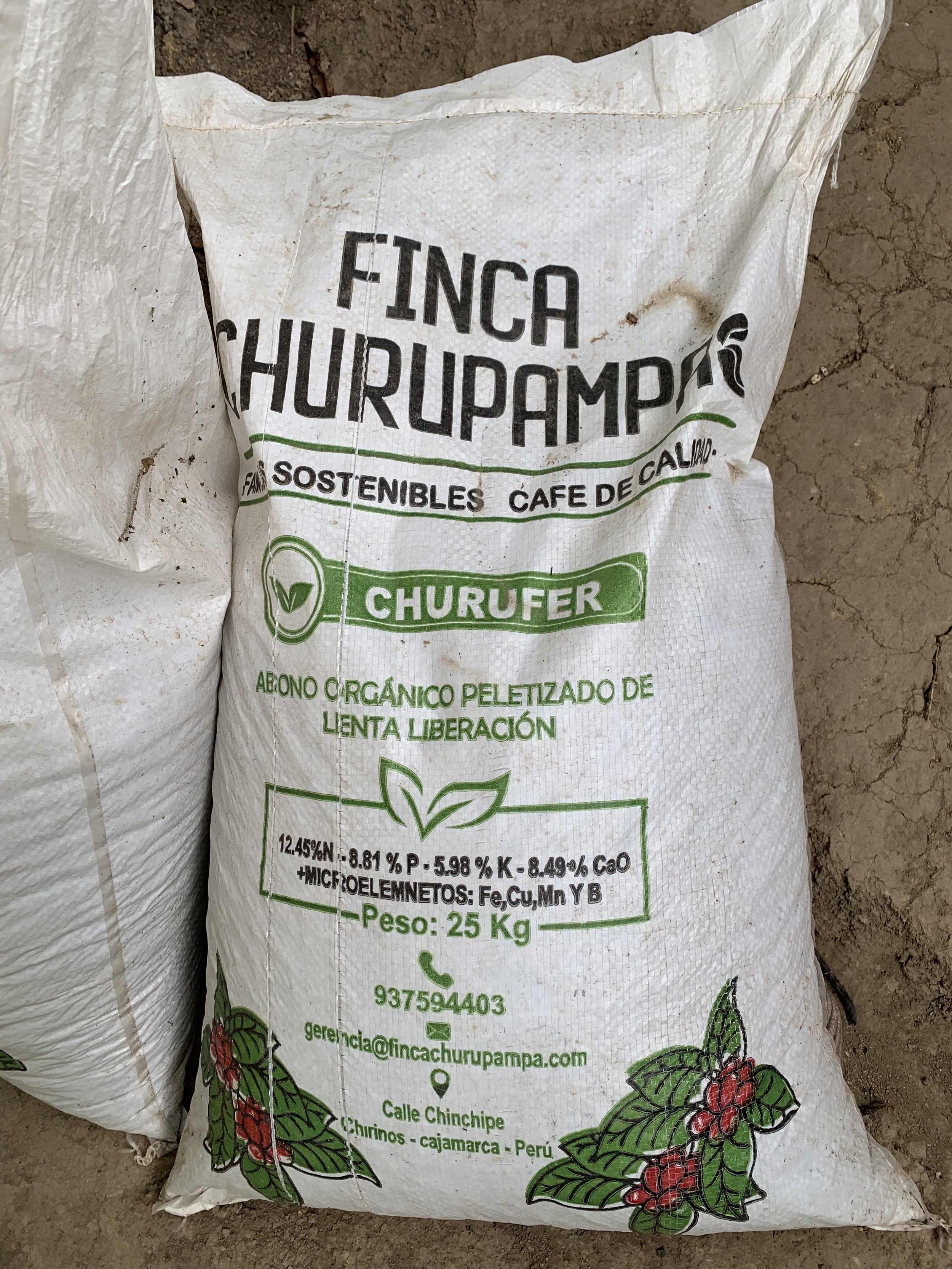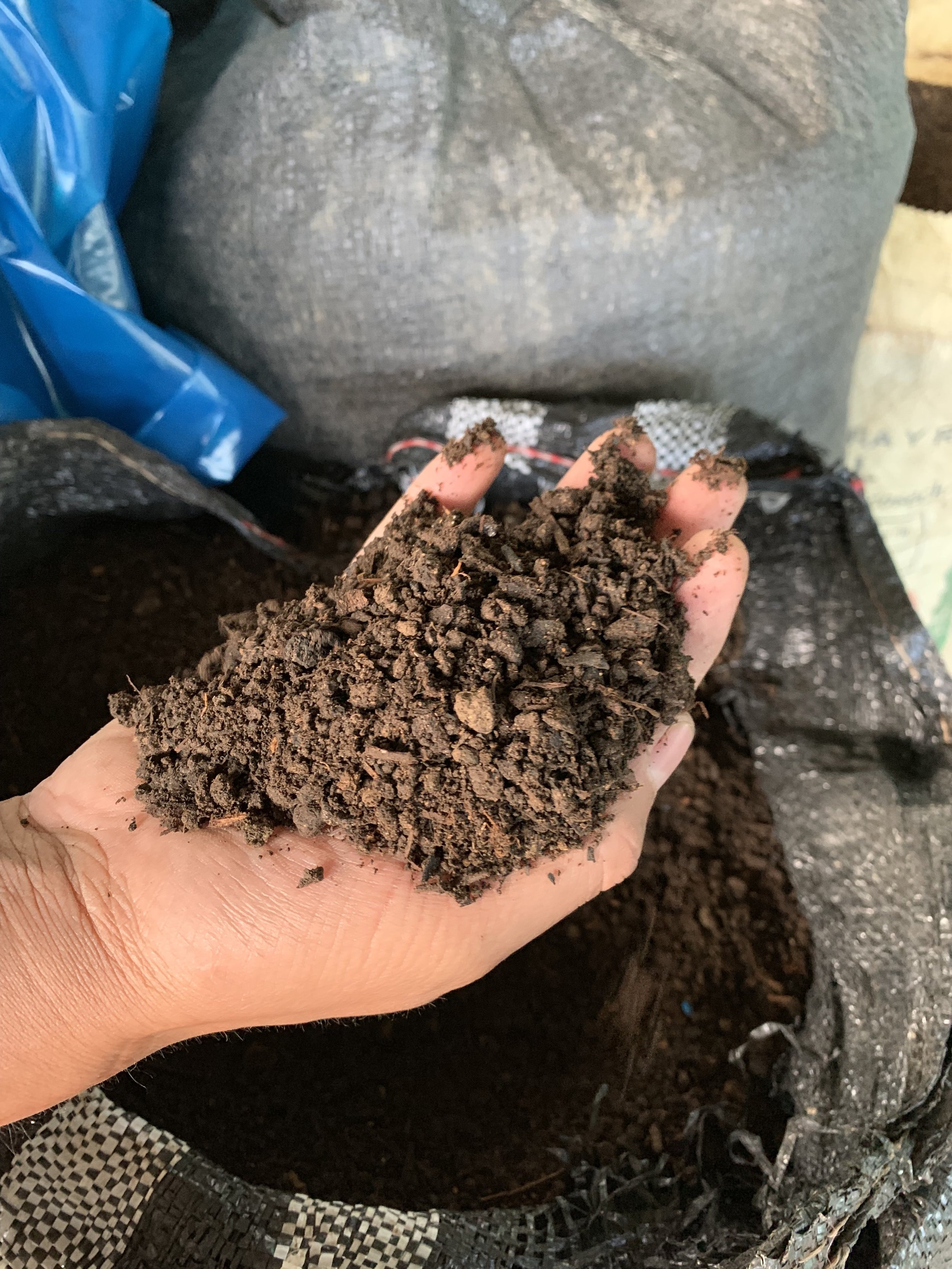by Katie Gilmer Pon
In October I went to Peru to visit La Minita suppliers. Peru holds a special place in my heart as I have worked with welcoming, entrepreneurial, and motivated folks there for over ten years. On this trip, I went to the northern coffee producing regions of Cajamarca and Amazonas. I was greeted at almost every farm with a full lunch – chicken, rice, cuy (guinea pig), tomatoes, cucumbers, potatoes, and yucca. The steep bumpy roads bring you to vistas where you feel like you can see all the way to the Amazon jungle.
Northern Peru grows 55% of the country’s coffee and it shows. Every town you pass has multiple “compra de café” buildings and every pickup coming out of the mountains is loaded with black bags of coffee in parchment. Peru doesn’t produce as much coffee as its neighbors Colombia and Brazil but it has found its niche with organic production. Its potential as a specialty coffee origin grows every year as more buyers come looking for not only certified coffees but also unique lots and traceable coffees. The northern region has ideal conditions for specialty coffee – high elevations, varied coffee varieties, and strong producer organizations. During my visit, I learned about the state of the current harvest, how the low C market price is affecting farmers, infrastructure changes to improve quality, and more.
The final numbers aren’t in yet but it’s anticipated that the 2019 harvest volume is 10-15% lower than in 2018. Much of Peru’s coffee is certified fair trade, organic, or both. The price premium that those certifications bring means a lot in the current low C market. Therefore there aren’t many producer organizations selling conventional (uncertified) coffee. This is a change from a couple years ago when you could get relatively plentiful conventional Peru.
A little background on Peru coffee: Peru doesn’t have a dominant national coffee body like the Colombian Coffee Growers Federation but the farmers cooperative movement is strong. About a third of coffee exported is produced by cooperatives. Part of the reason for cooperatives is that the average farm size is a small three hectares. Belong to a cooperative allows producers to combine and sell their coffee in larger volumes, achieve a certification, sell for a better price, and receive training. It’s also one of the few ways that coffee farmers can access government funds for quality and livelihood improvement projects (only cooperatives can apply for the funds). The traditional method of processing is for producers and their families to pick their own cherries and depulp and ferment their washed coffees on their farm. Then they dry the coffee and deliver dried coffee in parchment to their cooperative.
Weather-wise, in Cajamarca the rainy season was longer than it should have been. Normally the rains would stop in June as coffee harvesting starts but this year it rained off and on until August. The problem with the unseasonable rain is it makes it hard to dry coffee steadily and consistently. The traditional way to dry in Peru is on tarps on the ground or on small cement patios. Some producers have raised beds but few have covers over those beds to protect from rain. This means coffee that is drying may get wet again if the producer is not diligent with covering the tarps or patios.
Drying might be the biggest factor holding Peru coffee back from reaching higher scores in the cup. Most organizations said that the first step they recommend producers upgrade is the drying process because that tends to be the origin of most quality problems. In both Cajamarca and Amazonas, I visited many drying modules. The designs differed, but all consisted of two or three levels of stacked drying beds covered by a metal or plastic laminate roof and enclosed by plastic sheets. The key with these drying modules is that they don’t get too hot. Their goal is to slow down the coffee drying process as this has been proven to lengthen the shelf life of a coffee and prevent woody flavors from developing prematurely (for the science on this, check out the Reco talk from a true maestro of coffee processing Dr. Flavio Borem).
One producer I talked with, Señor Nilson Altamirano Pita of the Valles de Café Cooperative, said his drying module has elongated drying time at his 1,900 meter elevation farm to 20-25 days from a previous 5 days. The cup quality of Senor Nilson’s coffee went from an 82 to an 84. And since his cooperative pays more for better scoring coffee, this means more money in the bank. Future investigations will look into which drying temperature curves produce optimal quality.
One effect of the low C price is that producers are not investing in farm inputs. Coffee is a cash crop and when there’s barely enough to put food on the table and send your kids to school, buying pricey chemical fertilizers for your plants is a low priority. Of course, this means next year and the year after, the plants will not be as productive as if they were being fertilized. Finca Churupampa in Chirinos, Cajamarca, is addressing this issue by teaching producers to make their own small fertilizer plants on their farms. They have a simple design for making organic fertilizer that breaks down cherry pulp, kitchen waste, livestock manure, and other organic material. They apply a homemade microbial compost tea that speeds up the decomposition process. A batch of compost fertilizer is ready in only 30 days under these conditions. Finca Churupampa is also working on a new product called Churufer. It’s a nutrient dense, slow release pelletized fertilizer. It’s a little more expensive than the compost fertilizer but packs a nutrient punch that’s equivalent to chemical fertilizer. It’s being made on-site at Finca Churupampa and costs two-thirds less than chemical fertilizer.
Another interesting topic that is being addressed in Peru is the presence of glyphosate in coffee. Glyphosate (the main ingredient in Roundup) is an herbicide used to kill weeds that pop up around coffee trees. Glyphosate is prohibited under the organic rules. More buyers are testing their organic coffees for glyphosate presence, especially for Asian and European sales. When visiting the Aprocoyce cooperative, manager Gemner Losano told me they take glyphosate very seriously. If a co-op member is found with glyphosate on his organic farm, the producer is immediately ejected from the cooperative and their name is publicly posted to warn other cooperatives from letting him join. The risk is too great to the other members who do maintain the organic standards. This speaks to the importance of organic certification and to the strength of cooperatives.
During my visit to Peru, change was the one consistent I saw everywhere. An extremely low coffee market price has affected coffee producers in Peru, without a doubt. But I saw that producers were trying to adapt. Curiously, the lower market price has driven improved quality as producers strive for a higher price based on cup score. I love working with our Peruvian suppliers and am excited to bring their stories and efforts to coffee roasters so they receive a fair price for their coffee. A couple very nice Peru lots have already landed and more are coming. Get in touch to try some samples!
Katie Gilmer Pon
